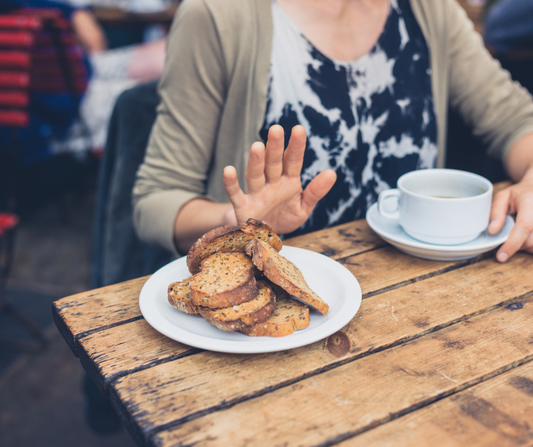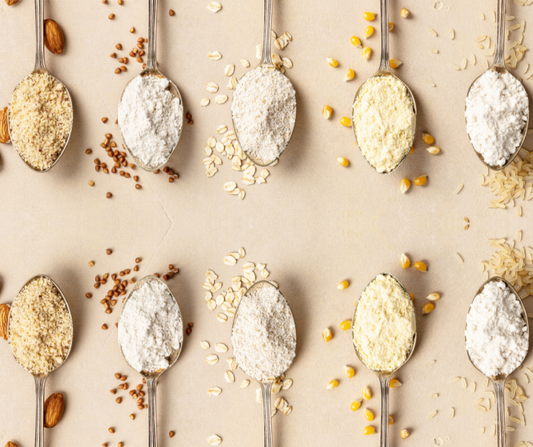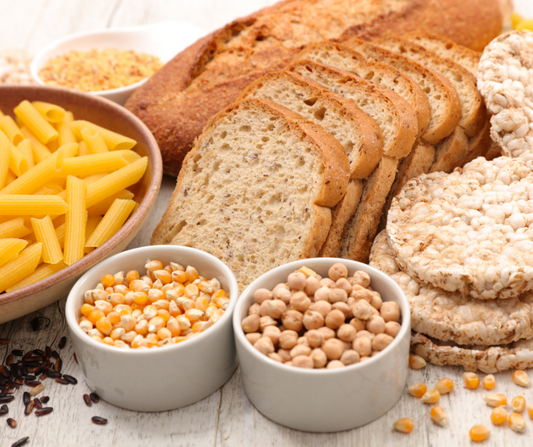What is Gluten
Share
Many people panic when diagnosed as having Coeliac disease or Gluten intolerance. Life is hectic enough without having to learn a whole new way of selecting and preparing food. Knowledge is power however, so once you set about learning more, a gluten-free life becomes easier and eventually second nature. The first step is understanding what gluten is and what foods contain it.
Gluten is a protein that occurs naturally in some grains, particularly wheat, rye, triticale, barley and possibly oats. There is conflicting research about whether oats can be eaten safely on a gluten-free diet; for this reason, oats are usually grouped with the gluten containing grains.
Gluten containing grains are used as ingredients for a wide range of prepared and commercial foods. Wheat flour alone is found in thousands of products. Any product containing even tiny quantities of gluten must be totally avoided by people with Coeliac Disease; it is not a matter of ‘a tiny amount won’t harm’.
Gluten containing foods
While it is obvious that certain products contain gluten (breads, pastries, cakes, muffins, biscuits, cereals and pasta), there are a large number of products where it is not so obvious. There are several ways to increase your knowledge about which foods contain gluten:
· Visit a Dietitian. They will talk you through any concerns and point you in the right direction with food. This is a very important first step for anyone newly diagnosed with coeliac disease
· Go to the website of the Coeliac Society of New Zealand https://coeliac.org.nz/ This society aims ‘to improve the awareness and understanding of the disease within our community and to promote and improve the quality and supply of gluten free foods available through the food chain’. As well as useful advice about gluten-free foods, it also lists eating establishments throughout New Zealand that serve gluten free food.
· Explore the gluten free section of your supermarket Because of increased demand for gluten-free foods, most supermarkets have a section devoted to these. Products include bread, muffin, pastry and pancake mixes, flour, stock powder, soy sauce and many other alternatives to commonly used gluten containing foods.
· Read food labels All food labels must contain an ingredient list. Once you know what to look for, this is another way to check if the product contains gluten Avoid products containing:
o wheat, flour, wheat starch, wheat germ, wheat bran, enriched wheat flour, bulgar, spelt, durum, couscous, semolina
o oats, oatmeal, oat bran, oat flour, rolled oats
o rye, rye flour
o triticale, triticale flakes
o barley, barley flour, barley flakes
o cereal, flour, bran, some types of hydrolysed vegetable protein, starch, hydrolysed plant protein (often found in stock cubes) modified food stach, cornflour made from wheat
Food additives listed as numbers can be worrying. Most of these do not contain gluten, but modified starches (1400 – 1450) are of most concern. If they contain gluten it should be specified on the label however. However the presence or absence of gluten in a specific food product can only be supplied by the manufacturer. FSANZ (Food Standards Australia and New Zealand) requires that cereals containing gluten and their produces namely wheat, rye, barley, oats and spelt and their hybridised strains must be declared on the label at all times when present in food as an ingredient, an ingredient of a compound ingredient, a food additive or a processing aid” If in doubt, contact the manufacturer, your local Coeliac Society or a Dietitian.
Products to check for gluten
· Baked beans
· Creamed corn
· Baking powder
· Crumb coatings and any ready to go product with crumb coatings
· Sausages and processed meats
· Soups, stocks and stock cubes
· Sauces and gravies
· Dressings and mayonnaise
· Malt containing products such as breakfast cereals, malted milk powders such as milo
· Corn flour (sometimes it is made from wheat
· Custard powder
· Mustard powder and curry powder
· Powdered drinks such as drinking chocolate especially if they contain maltodextrin
· Beer



